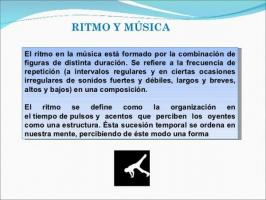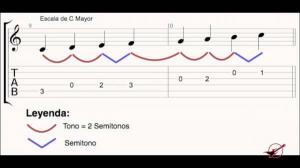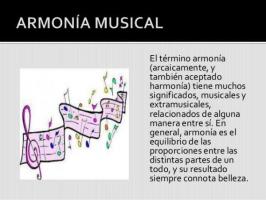Discover what is the musical FORM and its VARIATIONS
Say shape is to refer to the structure, all those elements that allow us to recognize the classification of a work by its characteristics. These elements include musical genre, speed, meter, harmony, intention, its parts and their organization, etc.
Probably the authors at the time did not take into account a specific form when composing, with the time certain certain styles and characteristics were joining each other to create prototypes. The names of these structures were acquired through history by repeating patterns.
These different patterns, which are now classic guidelines, have a specific name depending on of its classification according to the characteristics that we mentioned above (metric, harmony, parts, etc).
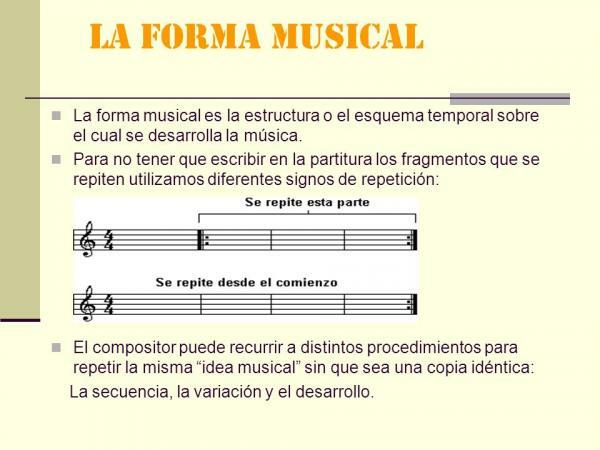
Image: Slideplayer
In this lesson on the musical form and its classifications we have to talk about the different elements that will allow us to identify what form we are in. They are as follows:
Duration and parts
The duration of a work is the time it takes to be interpreted from beginning to end. Its parts and the number of times they are repeated also play an important role.
The parts of a work can be recognized by reason melodic or harmony. Just like a popular song that has verse and chorus, in classical music we can identify musical segments that are usually named with letters when analyzed (Part A, Part B, etc.)
In more complex works we can also find “movements” that could be considered works in themselves, but that are related to each other with the same motive or intention. A clear example of this is the "Symphony", which is a work made up of 4 different movements.
Tempo
It is the speed with which a work is interpreted. The tempo It is measured in BPM (beats per minute) or PPM (beats per minute). Musical pieces can be slow, fast, moderate, etc. and these speeds have a name assigned by speed ranges. For example, him "Walking" it is interpreted from 76 to 108 ppm.
Musical metric
It is the number at the beginning of the measure in the form of a fraction that indicates the number of notes and their values determined for each measure. The meter plays an important role in the accents and the way of interpreting a musical part. There are musical forms that are recognized mainly by meter, such as the “Waltz”, Which is in ¾.
Instrumentation
Refers to instrument types for which a play was written. For example, him "concert” It is a musical form for symphony orchestra, with the aim that a main instrument can shine. We can also mention the "Opera" which is a form that seeks to show off the voice when telling a story and has a directly related singing style.
Reason
The objective behind the composition of the work. Music is a multidimensional art that has been used not only for the pleasure of listening in concert, but for other purposes. The "polonaise" for example, it originates from traditional Polish dance, so it was originally a dance, but the music associated with it became a musical form (listening to the polonaises of Chopin). Another clear example can be the “Gregorian singing”, whose objective was the recitation of biblical texts or the "ballet" composed for the theatrical dance of the same name (see "Swan Lake" by Tchaikovsky).
If we must classify the shapes, we could get 3 large groups: instrumental, vocal and mixed forms. There are much more popular or common ways than others, but these are some by category:
Instrumental forms
Allemande, arabesque, badinerie, trifle, ballet, barcarola, batlla, berceuse, bourrée, caprice, cassazione, chaconne, concert, courante, quartet, differences, fun, study, fantasy, fugue, dashing, giga, impromptu, invention, march, minuet, mystery, musette, nocturnal, overture, partita, parade, pavana, poem, symphonic poem, polka, prelude, rhapsody, ricercare, rondo, scherzo, symphony, sinfonietta, sonata, soantina, suite, tiento, tocata, trio, waltz, variation, saraband.
Vowel forms
Aria de bravura, arietta, arioso, cantata, Gregorian or plain chant, cavatina, concertante, mass, motet, opera, operetta, oratorio, passion, psalm, recitative, requiem, carol, zarzuela.
Mixed forms
Aria, ballad, canon, elegy, habanera, intermezzo, romance, serenade.
Exceptions
It is important to mention that since we talk about art and creativity, there may be musical forms that break with some schemes, still maintaining certain characteristics to be recognized within a shape. For example, Beethoveen's "Pastoral Symphony", which despite having 5 movements instead of the conventional 4, is still considered a symphony.
Music is a universe that comes in many forms. This variety is refreshing and allows us to appreciate the creative power of the human being. Now that you know more about what is the musical form and its classifications, you will have a whole world ahead of you to explore. If you liked this article from a PROFESSOR, We invite you to leave a comment and continue exploring.
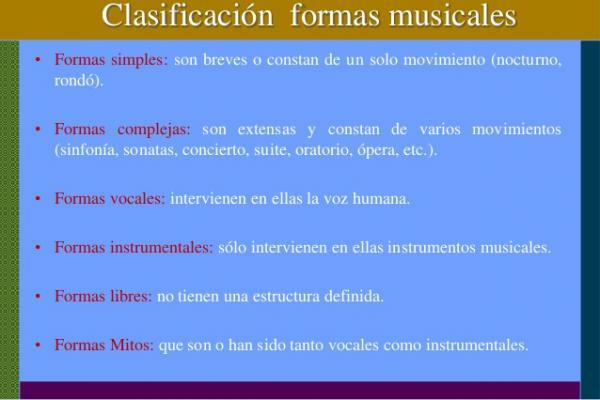
Image: Slideshare

